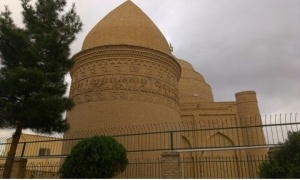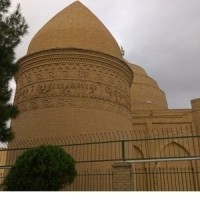Articles
In Memory of Dr. Ehsan Yarshater
Borj-e Chehel Dokhtar (Borj-e Čehel Doḵtar)
Borj-e Čehel Doḵtar, also known as Čehel Doḵtarān, is a brick Saljūq tower built in Dāmghān, one of the main cities of Ghūmes in 1054. This brick cylindrical tower of Čehel Doḵtar is located in Dāmghān, one of Iran's central cities. As the main…
In Memory of Dr. Ehsan Yarshater
Tarikhaneh (Tāriḵāna)
One of the oldest mosques of Iran was constructed in Damghan between 748-787 (130-170) on the foundations of a Sassanid palace or fire temple. Masjid-e Tāriḵāna (Khāne-ye ḵodā, the house of God) lies southeast of Dāmghān. It was built between 748-787 (130-170) (Godard, p.109)…
Madrasa in Iran and Baghdad under the Saljuqs
Madrasa, an Arabic word, taken from darasa, means a place where dars (lesson) is taught. Today, madreses are intended for children before they go to university and include schools where multiple kinds of lessons are taught. Medieval schools dedicated to religious studies were called madarsas.…
Chehel Dokhtar Tower in the Shadow of Damghan Shrines
One of the main issues of Iranian art and architecture is the presence of numerous towers with various names and functions throughout the country. Despite being obsolete in the context of modern heterogeneous architecture, these towers provide a fascinating glimpse into the dark angles of medieval…
Toghrol Towers and the Symbolic Function of the Iranian Medieval Architecture
The Iranian towers that flourished in the Saljuq era (1037-1194) are glorious symbols of medieval times. This article attempts to explore the functions of Iranian towers in medieval times with respect to Toghrol towers in Ray and Mehmandust. Regardless of their usage in astronomy and…
Tarikhane Mosque, Its Holiness and Continuity of Function
Muslim conquests of Iran led to changes not only in political constitutions, but also in cultural structures. Associating with different religious structures, Islam brought about many social changes in the lives of Iranian people. Transformations in the functions of many social monuments are the inevitable…
Kabutarkhana, Its beautiful Structure and Economic Function
Kabutarkhana (the nest of pigeons) is one of the most prominent Iranian medieval towers dating back to pre-Islamic times (Mirzaie, 2003, p. 132). Kabutarkhana was mainly located in plains with mild temperatures beside rivers, canals, and aqueducts. The farther we got from the plains, the…
Coexistence of Mysticism, Shia and Sunni in Mausoleums of Bayazid and Sheikh Zahid
The structure of Iranian medieval thought was changed by passing through different places for a long time. However, the nature of thought did not change, and so it is the fixed and relatively stable characteristics of these streams of thought that lead historians to analyze…








